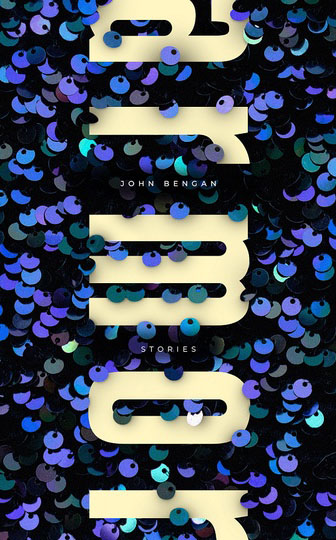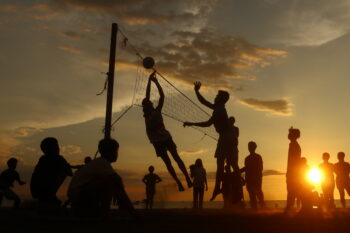
REVIEW: “Armor: Stories” by John Bengan
Published by BUGHAW (ADMU Press), 2022
CEBU CITY (MindaNews / 31 March)—In John Bengan’s world, as projected in the 13 short stories in this stunning anthology titled “Armor: Stories,” death lurks at every corner. And the iconic image is one of Death riding a black Yamaha motorcycle carrying a Magnum out to shot a target in the mean streets of Bengan’s beloved city which he shares with Rodrigo Duterte.
Different readers will respond differently to this book. The squeamish will cringe, the scrupulous and the loyal fans of Davao City’s longest-reigning Mayor will lambast the author, the city’s tourist agencies and hotels will want this book banned, the ignorant will ask: “Totoo ba ito?”, the human rights advocates will feel vindicated, the hit men profiled in these stories (if they ever read books at all) will imagine themselves heroes in action films and Erik Matti (best known as director of On the Job) will most certainly be tempted to auction the book so he can make a movie from these stories.
A reviewer could easily run out of adjectives in describing the stories for practically almost all of them are grim, somber, gloomy, ghastly, even repellent and sinister. But there is no denying Bengan’s determination to tell these stories come what may; he is unflinching in getting the reader to view his world through the characters that inhabit the spaces of this world’s landscape.
However, if the prospective readers pick up this book and are ready to face images painted in the dark hues of life’s reality—which dominate many Third World scenarios and not just in our country—they would be rewarded to gain new insights into how evil can be so perpetuated. And yet it can also be easily ignored and, for those who are easily swayed into the romance of violence, even fully embraced as necessary for the sake of “peace and order.”
“Armor: Stories” is riveting; readers can be so engrossed in turning the pages that they can be deprived of sleep as they’ll find it difficult to put down the book until they have read it from cover to cover. But be warned: the stories could haunt you all the way to your nightmares.

This is to say that the stories hold your attention to the maximum and a reader can either be fascinated or repelled by the events that unfold in these narratives. The characters in these stories are interesting persons who also dominate the films of Ishmael Bernal (especially in City of the Dark), Lino Brocka (Insiang and Bona) and Brillante Mendoza (Kinatay and Ma’ Rosa). Sometimes derided as “poverty-porn,” these films are located mainly in squatter areas, breeding ground of all sorts of criminality and disorder.
These characters include drug buyers and sellers, balut and Sweepstakes ticket vendors, beggars and hit men, tong collectors, trisikad drivers, the laborers pushing karitons in the market, prostitutes and those engaged in phone sex, beauticians, sikyo guards, street children and even ghosts. They are the scalawags, the scum of the earth thought of as worthless. The powers-that-be would deride them as completely without good qualities or even evil and are better disposed of so the rest of the population could “live in peace.” At the top of the list are drug pushers/users but also those who disturb society as in “the subversives.”
These characters inhabit the dark side of Davao City’s underworld, the one kept away from the tourists’ eyes, which are never depicted in the glossy tourist brochures. However, they exist side by side with the flashy resorts of Paradise Island, the Dusit Thai and Marco Polo Hotels, the skyscrapers whose glass walls sparkle in the morning sun, the SM malls and the mansions of the gated housing villages.
One only needs to take a pump boat along the shores of Davao Gulf and view all the shanties that dot the shore from Toril to Panacan. And add the squatter areas under the Bolton Bridge and those sprouting near garbage dumps and one can guess that a sizable population of this city are forced to live in such squalor localities.
In “Armor: Stories,” the main focus are the operations of the Davao Death Squads (DDS) which explains that Death is this book’s central character. Of the 13 stories, nine deal with the DDS in one way or another. Four others provide a relief from the killings that include: Manny Pacquiao speaking in “carabao English,” the making of a “bomba film,” a boy’s attempt to engage in phone sex, and a scene out of a tragic flood that hits the city.
Of the nine stories dealing with extra-judicial killings, two narratives deal with children whose fathers were killed by hit men. In “At the River,” a young girl named Racquel is taunted by the children in her neighborhood for having a father who is a “killer.” The father, who purportedly acted as hit man before he shifted to a job as driver of a garbage-collecting truck, eventually disappeared and presumed to have been summarily killed.
In “Bad Heart,” the unnamed main character, a young man with a heart problem, has to tell a lie as to how his father died. To his friends, he says that his father who was a seaman drowned. But in fact, he was a driver of a businessman engaged in drug peddling. Both the driver and the businessmen were gunned down. The main character’s mother went to attend the wake of the businessman and later informed her son that both were victims of EJKs.
Another story, “To the Night Market,” is about three young boys who found that rapping about the exploits of their Mayor attracted attention from the listeners who would then give them money. James and Tata are brothers who are part of a barkada with Ikoy. Ikoy has an older brother named Jojo (presumably a drug user himself because later was rumored to have “disappeared”) who was idolized by all three of them because of his unusual skills, including making slingshots that could be used as weapons when needed. Jojo made one for Ikoy which would use nails instead of stones to hit a target.
One evening, a group of men asked to bring them to a place where they could rap and even if the kids hesitated at first, eventually they agreed to go with the men. It turns out that the men were going to abuse the kids, prompting Ikoy to use his slingshot. He hit the men who then crumpled on the ground, making it possible for the three of them to escape.
As the story unfolds in “Higher Orders,” Karlo, the main character being initiated into becoming a hit man, accompanies Lorejo, Ramirez and Ely in an operation to shoot a businessman-drug dealer who was coming out of the Davao Doctor’s Hospital. Even as he was holding his son’s hand while crossing the street, he was shot and presumably killed on the spot. As the businessman had three bodyguards, there followed a gunfire in the street and one of the hit men was killed. Once in the safety of their hiding place, to relieve their tension, two of the hit men engaged in sex with each other.
In “Armor” (from where the title of the anthology comes from), Ronnie, a gay beautician who lost his beauty parlor when an assistant ran away with the money and was then forced to do home service, was ready to be assassinated, knowing that he, too, could any day be killed having been a drug user. But before embracing the day of his death, he joins a Miss Gay Contest. Having to represent Miss Britain, he has to think of an appropriate custom. He decides to wear a sparkling gown (bought from an ukay-ukay store) with a golden armor worn in an arm.
A young boy named Biboy begged him to be his assistant, and was hired to assist her in making the armor. On the night of the contest, Ronnie feels that she would win the crown. Just as the winner is going to be announced, he notices a bald man in the audience who he feared would shoot him. Instead the bald man was looking for Biboy who was the intended target having been a drug seller/user. As the bald man forcibly abducted Biboy, Ronnie jumps from the stage to protect the boy but to no avail.
The stories “After the Warning” and “Going Away” are inter-related; the former is from the lens of Alex Abelar and the latter from Kirk’s view. Alex is a favored son of a middle-class family who was named in a list of possible EJK victims announced on TV. His parents panic knowing that their son never touched any drug. So they contact friends in high places who could set up an appointment with the Mayor. When he met the parents he announced to them that it was not their son, but another young man also named Alex Abelar who the police were looking for. Escaping away from Davao to take a break, Alex went on a vacation to Cebu and meet Kirk who worked as tour guide.
Kirk turned out to be someone Alex had met earlier when he rode a jeep. Kirk was with another young man, who was seated beside Alex, and was shot inside the jeep. Both Kirk and Alex were able to leave the crime scene. Eventually Kirk amassed a huge sum peddling drugs and with the loot, he was going to escape Davao as he feared for his life. He first went to meet his friend Toto, who he hoped would join him in leaving Davao City. But Toto had a pregnant wife and needed money for her delivery and asked Kirk to accompany him to secure more drugs for sale. Kirk hesitantly joined him, and as names had to be entered in the logbook, he used the name Alex Abelar. But Toto was eventually gunned down, and Kirk barely managed to leave for Cebu ending up as a tour guide where he meet the real Alex Abelar. But neither seemed to remember where they had met earlier.
“Disguise” is a first-person tale and the narrator is no less than Mayor Duterte who, as the urban legend goes, drives a taxi some nights around town so he personally gets to have an idea what happens in his city in the dead of night. His first passenger is a woman carrying groceries who goes home late after meeting friends for coffee. She eventually recognizes him and before alighting took a selfie with the driver. While driving around the city, he talks to himself and claims that he has nothing to do with the killings. But as Mayor he justifies his non-intervention with the line: “Who am I to get in the way of persons who want to wage a war against criminality?”
He then parked his taxi in front of a batchoyan where the people who gathered there initially did not recognize him, but seeing the .45 tucked on his waist, eventually acknowledged the Mayor’s presence. A few of them began to ask whether the rumor was true that he was going to run for the Presidency, which he denied. To please everyone in the eatery, he bought all the baluts of a vendor to be distributed to them before he went out to cruise again.
His next passenger was a middle-age man who sobbed while riding the taxi. When they reached the destination of a relocation area, the man exited the taxi without paying. But as he left, the driver’s hair at the back of his neck stood, remembering the urban legend of ghosts appearing in the dead of night. Before going home there is one more passenger who with a knife demanded that the driver turn over his wallet. Ready for this kind of a hold-up moment, Duterte took his gun and aimed at the man’s face who cowered. However, even as he threatened to shoot the man, instead he turned him over to the police to be imprisoned.
The four other stories provide a break from the bleak scenario involving the death squads. In “Manny Pacquiao Speaks to a Butterfly in California,” the main character is, of course, the people’s champ. Written in the manner when he speaks with his “carabao English” and speaking in the accent reminiscent of how the famed Fil-Am stand-up comic Jokoy talks (when he takes on the role of Joseph the son of the migrant widowed mother), Manny shares his lament regarding his mother Dionisia to a butterfly in California when he takes a break from his training. He tells the butterfly that he went to fetch his mother at her D.I. lover’s shanty in a squatter area to avert a scandal. She refused to leave her lover. This was a fight Manny lost.
In “Voice,” a sexually conflicted young man explored the world of phone sex and met Keno. He gave Keno his family’s phone number and, pretending to be a girl (since he can sound like a young girl over the phone), they engaged in phone sex. But conflicted with what he did, he gave Keno the telephone number of his best friend Nikka. Keno then called him, threatening to harm him for his act of deception. For a while, he feared for his safety, until he met Nikka who seemed to have inter-acted with Keno and found it pleasurable. He then wished Keno would call him back.
Selena Lacson is the main character of “Skin Flick.” A veteran of beauty contests, she was discovered and launched as a movie star, only to end up a “bomba star” with the pito-pito films. While filming one more “penetration film,” with Director Nonong, she struggles to project herself as a serious dramatic actress only to be frustrated by the reality of the film industry. In one of the scenes being filmed, her co-star wanted “to go all the way;” instead, she asserted her agency and managed to escape being a victim of the sleazy demands of the predators of this circle of filmmakers.
The last story in this anthology, “We Are Safe Here,” is a cautionary tale detailing what can happen to the population if a major flood hits the city. As floodwaters rose, two sisters for a while got separated and one of them lost her husband and son, but eventually they were reunited at a village of a Lumad community located outside a fenced property of a known pastor. They survived through the generosity of the Lumads who shared their food with them. Meanwhile those inside the fence seemed to have been better provided for. But then the waters rose further, pushing the two sisters and all those in the Lumad community to run for their lives and walk up the steep mountain towards a forest. Looking down below, the sisters saw how the pastor’s enclosed sanctuary was inundated by the flood waters.
So what do we make of Bengan’s “Armor: Stories”? On one hand, it can just be labelled a thriller (ala Pulp Fiction), but on the other hand, it is a very good example of how literature can courageously unmask the hypocrisies of a city gone mad. In this sense, this book lives up to literature’s purpose: namely to help “record, preserve and transmit knowledge and to play a social, psychological, spiritual and political role.” It follows the track of what C.S Lewis wrote, namely, that: “Literature adds to reality, it does not simply describe it. It enriches the necessary competencies that daily life requires and provides; and in this respect, it irrigates the deserts that our lives have already become.”
Here lies the irony of C.S. Lewis’s words in relation to “Armor: Stories.” The grim reality of life portrayed in these stories which has turned the Davao landscape into a howling desert (and sadly, a killing field)—once exposed in the light—can bring forth the rains to return the parched land into what was once a most fertile field. One can even claim that this book supplements the journalistic coverage of the EJKs from way back, in the mid-1990s during Duterte’s first term as Mayor (1988-1998 all the way to his third term, 2013-2016, and beyond) by providing the drama behind the news stories.
Another significant feature of this anthology is that decades from now, it can be referred to as historical narratives. While this is a work of fiction, the stories here are not fake news; the author makes no attempt at disinformation. This is “history from below,” written “from the margins.” If these stories have not haunted the citizens of this city and the country towards admitting that we have been complicit to the “crimes against humanity”—by our apathy if not implicit support for the killings—then the International Criminal Court will do it for us. Last we heard from MindaNews, the ICC has just junked the Philippine government’s appeal to suspend its investigation of killings linked to his administration’s “war on drugs.”
Reading “Armor: Stories” is like “looking through a glass, darkly,” to use a phrase originally coined as a title of an anti-war poem written by George S. Patton (later also used by the National Artist Francisco Arcellana as title of his book). A few paragraphs of the poem succinctly relates Duterte’s drug war to Patton’s own experience of war:
Through the travail of the ages,
Midst the pomp and toil of war,
I have fought and strove and perished
Countless times upon this star…
I have known the call to battle
In each changeless changing shape
From the high souled voice of conscience
To the beastly lust for rape.
I have sinned and I have suffered,
Played the hero and the knave;
Fought for belly, shame, or country,
And for each have found a grave…
(MindaViews is the opinion section of MindaNews. Redemptorist Brother Karl Gaspar is Mindanao’s most prolific book author. Gaspar is also a Datu Bago 2018 awardee, the highest honor the Davao City government bestows on its constituents. He recently moved to his new assignment in Cebu City.)







